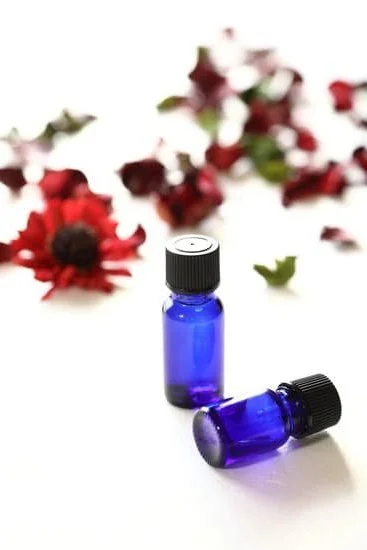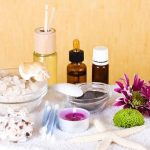An aromatherapy chart is an essential tool for anyone interested in the practice of aromatherapy. This comprehensive guide provides a visual representation of the various essential oils and their properties, as well as guidelines for creating personalized blends. The significance of an aromatherapy chart lies in its ability to aid in the therapeutic and healing benefits of aromatherapy, making it an indispensable resource for practitioners and enthusiasts alike.
The history of aromatherapy charts can be traced back to ancient civilizations such as Egypt, Greece, and China, where aromatic plants were used for their medicinal and spiritual properties. Over time, the practice evolved into what is now known as modern-day aromatherapy, with the development of charts to categorize and understand the wide range of essential oils available.
Today, aromatherapy charts continue to play a vital role in harnessing the power of nature’s fragrant essences for holistic well-being.
Understanding essential oils is fundamental to comprehending the importance of an aromatherapy chart. These highly concentrated extracts from plants have been valued for centuries for their therapeutic effects on the body, mind, and spirit.
Each essential oil possesses unique properties that contribute to its specific aroma and potential health benefits when used in aromatherapy practices. From relaxation and stress relief to enhancing mental clarity and focus, essential oils offer a myriad of wellness benefits that can be explored using an aromatherapy chart.
Understanding Essential Oils
Essential oils play a vital role in aromatherapy and are the key elements used to create personalized blends for various physical and mental health benefits. These highly concentrated plant extracts are known for their therapeutic properties and have been used for centuries in different cultures for healing purposes. Some of the most common essential oils used in aromatherapy include lavender, peppermint, eucalyptus, tea tree, and chamomile, each with its unique scent and properties.
Different types of essential oils offer various benefits such as relaxation, stress relief, improved sleep quality, pain relief, immune system support, and mood enhancement. For example, lavender essential oil is popular for its calming and sleep-inducing properties, while peppermint essential oil is known for its energizing and refreshing effects. Understanding the properties of each essential oil is crucial when creating personalized blends using an aromatherapy chart to address specific needs.
Aromatherapy charts often categorize essential oils based on their therapeutic properties such as antibacterial, antiviral, anti-inflammatory, sedative, stimulant, among others. These charts serve as a valuable reference tool for aromatherapists and enthusiasts alike when selecting the right essential oils to achieve desired results. Ultimately, understanding the diverse range of essential oils available allows individuals to harness their full potential in promoting overall well-being through aromatherapy practices.
Benefits of Aromatherapy
Aromatherapy is a holistic healing treatment that uses natural plant extracts to promote health and well-being. The use of essential oils in aromatherapy has been known to have numerous physical and mental health benefits. One of the most effective tools in utilizing the therapeutic benefits of essential oils is an aromatherapy chart. These charts provide valuable information on the properties of various essential oils, allowing individuals to create personalized blends for their specific needs.
Physical Health Benefits
Aromatherapy has been found to have a positive impact on physical health, including reducing headaches, easing muscle tension, improving sleep quality, and supporting the immune system. For example, lavender essential oil is commonly used for its calming and relaxing effects, which can help with insomnia and anxiety. Peppermint oil has been shown to alleviate digestive issues and relieve headaches when used topically or through inhalation.
Mental Health Benefits
In addition to its physical benefits, aromatherapy also offers numerous mental health benefits. Essential oils such as lemon and bergamot are known for their uplifting and mood-boosting properties. These oils can be used in diffusers or during massage therapy to support emotional well-being. Aromatherapy has also been effective in reducing stress, anxiety, and symptoms of depression.
Case Studies and Testimonials
There have been various case studies and testimonials that highlight the effectiveness of aromatherapy in improving overall well-being. For example, a study published in the Journal of Alternative Complementary Medicine showed that inhaling lavender essential oil helped reduce anxiety levels in patients undergoing medical procedures. Another study from the International Journal of Nursing Practice demonstrated that using aromatherapy with cancer patients helped alleviate symptoms of nausea and anxiety.
These real-life examples showcase the power of aromatherapy in promoting both physical and mental health. If you want more information about different properties of essential oils per condition you can refer to an aromatherapy chart where you will find trusted sources for you course if action regarding those conditions you may be concerned about it’s use on them.
Aromatherapy Chart Basics
Aromatherapy charts are essential tools in the practice of aromatherapy, providing valuable information on the properties and uses of various essential oils. These charts typically include a wide range of essential oils listed alongside their therapeutic benefits and suggested applications. Understanding how to read and interpret an aromatherapy chart is crucial for anyone interested in using essential oils for health and wellness purposes.
When using an aromatherapy chart, it is important to familiarize oneself with the common symbols and terminology found within these resources. Symbols such as asterisks may indicate if an oil should be used with caution, while terms like “top note,” “middle note,” or “base note” categorize oils based on their evaporation rate and fragrance intensity. This knowledge helps individuals make informed decisions when creating personalized aromatherapy blends.
For those new to aromatherapy, utilizing an aromatherapy chart can be a helpful starting point for learning about different essential oils and their potential benefits. It allows users to easily compare, contrast, and select specific oils that align with their needs and preferences. Moreover, it serves as a valuable reference guide when exploring diverse aromatic options.
| Common Symbol/Terminology | Meaning |
|---|---|
| Top note | Essential oil with a quick evaporation rate; provides initial fragrance impact |
| Base note | Essential oil with a slow evaporation rate; provides depth to the overall aroma |
| Asterisk (*) | Caution symbol indicating that the oil should be used sparingly or avoided in certain situations |
Creating Personalized Aromatherapy Blends
Aromatherapy charts can be incredibly useful tools for creating personalized blends of essential oils to address specific physical and mental health concerns. By understanding the properties and benefits of different essential oils, individuals can use aromatherapy charts to mix and match oils to create custom blends that suit their needs and preferences.
Here are some tips for using an aromatherapy chart to create personalized blends:
- Start by identifying the specific physical or emotional issue you want to address, such as stress, headaches, or muscle tension.
- Refer to the aromatherapy chart to find essential oils known for their therapeutic properties related to your concern. For example, lavender is often used for relaxation and stress relief.
- Once you have chosen a few essential oils that align with your needs, use the chart to determine appropriate ratios for blending. Some oils may need to be diluted with a carrier oil before application.
Creating personalized aromatherapy blends allows individuals to tailor their aromatherapy experience to best support their well-being. Whether used for relaxation, mood enhancement, or physical relief, custom blends offer a unique way to benefit from the power of essential oils.
Using an aromatherapy chart facilitates this process by providing a visual guide that outlines the properties and recommended uses of various essential oils. By taking advantage of these resources, individuals can confidently experiment with different combinations and create tailored blends that cater to their specific requirements. With the help of an aromatherapy chart, anyone can become adept at blending essential oils for personal use in diffusers, massage oils, bath products, and more.
Aromatherapy Chart Resources
Online Sources
There are numerous websites where individuals can find aromatherapy charts to aid them in their practice. Websites dedicated to aromatherapy, holistic wellness, and natural health often offer free or purchasable charts for users to download or purchase. These online resources also often provide additional information about essential oils, their properties, and how to use them effectively.
Books and Publications
For those who prefer a more traditional approach to learning, there are plenty of books and publications available that contain comprehensive aromatherapy charts. Many of these resources not only include charts but also provide in-depth explanations of each essential oil, its benefits, and how it can be used for various purposes. Readers can find detailed instructions on creating custom blends, as well as safety guidelines for using essential oils.
Reputable Suppliers and Manufacturers
In addition to online sources and books, individuals interested in aromatherapy chart may also seek out reputable suppliers and manufacturers of essential oils. Many of these suppliers have their own professionally developed charts that accompany their products. These charts often include information specific to the oils they sell, such as botanical names, extraction methods, and suggested uses.
Aromatherapy chart resources play a crucial role in helping individuals navigate the world of essential oils and create personalized blends for their own wellness needs. Whether accessed online, through printed material, or from trusted suppliers, these resources provide valuable information that can enhance the practice of aromatherapy for both beginners and experienced practitioners alike.
Aromatherapy Chart Usage in Different Settings
Aromatherapy charts are versatile tools that can be used in a variety of settings to promote health and well-being. In spa settings, aromatherapy charts are often used by massage therapists and estheticians to select the appropriate essential oils for their clients.
By referencing an aromatherapy chart, professionals can create custom blends tailored to each individual’s needs, whether they are looking to relax, uplift their mood, or address specific health concerns. Aromatherapy charts also help in creating a consistent and harmonious sensory experience for clients, enhancing the overall spa treatment.
In holistic health practices, aromatherapy charts play a crucial role in helping practitioners and wellness coaches design personalized wellness plans for their clients. By understanding the properties and therapeutic benefits of different essential oils, practitioners can recommend specific blends or methods of use to support their client’s physical and emotional well-being.
Furthermore, incorporating aromatherapy charts into holistic health practices helps in educating clients about the potential benefits of aromatherapy and empowers them to take an active role in their own self-care.
At home, individuals can use aromatherapy charts as a valuable resource for creating DIY products such as candles, room sprays, bath salts, and more. Whether it’s for relaxation, creating a calming environment after a long day at work or supporting natural cleaning products around the house – aromatherapy charts provide guidance on which essential oils to use and how to safely incorporate them into various homemade products.
This allows individuals to harness the power of aromatherapy in their daily lives without having to rely solely on commercial products.
Overall, regardless of the setting – whether it’s professional or personal – aromatherapy charts can be utilized to enhance experiences that promote relaxation, stress relief, emotional balance, and overall wellness using the healing power of essential oils. By understanding how to read and interpret an aromatherapy chart effectively, individuals can make informed choices when integrating essential oils into their daily routines.
Conclusion
In conclusion, the use of an aromatherapy chart can greatly enhance one’s experience with aromatherapy by providing a comprehensive guide to essential oils and their therapeutic properties. By understanding how to read and interpret an aromatherapy chart, individuals can create personalized blends that cater to their specific physical and mental health needs.
The benefits of aromatherapy are evident in the countless case studies and testimonials that highlight its effectiveness in promoting relaxation, reducing stress, alleviating pain, and improving overall well-being.
As more individuals seek natural and holistic approaches to wellness, the significance of aromatherapy charts cannot be overstated. Whether used in spa settings, holistic health practices, or at home, these charts offer valuable resources for creating an optimal environment for healing and relaxation. Additionally, a variety of reputable resources such as websites, books, and workshops are available for those interested in delving deeper into the world of aromatherapy charts.
Ultimately, the use of an aromatherapy chart empowers individuals to take control of their health and well-being in a safe and natural way. With its rich history and promising future in holistic wellness practices, it is undeniable that aromatherapy charts will continue to play a vital role in guiding individuals towards a healthier and more balanced lifestyle.
As readers explore the world of aromatherapy charts, they are encouraged to embrace this valuable tool as part of their own wellness journey.
Frequently Asked Questions
What Essential Oils Complement Each Other?
Essential oils that complement each other are often paired based on their therapeutic properties and fragrance profiles. For example, lavender and chamomile are commonly paired for their calming and soothing effects, while peppermint and eucalyptus are often combined for respiratory support.
What Are the 10 Best Essential Oils to Try for Aromatherapy?
The ten best essential oils to try for aromatherapy include lavender, tea tree, peppermint, eucalyptus, lemon, sweet orange, rosemary, bergamot, frankincense, and ylang ylang. These oils are versatile and offer a wide range of therapeutic benefits.
Which Essential Oils Are Used for What?
Different essential oils are used for various purposes in aromatherapy. Lavender is well-known for its calming properties and can aid in relaxation and sleep. Peppermint is often used for its energizing effects and to alleviate headaches.
Tea tree oil is prized for its antibacterial and antiviral properties, making it useful for skin care and immune support among others. Each essential oil has unique benefits that make it suitable for specific applications in aromatherapy.

Are you looking for a natural way to improve your health and wellbeing?
If so, aromatherapy may be the answer for you.





